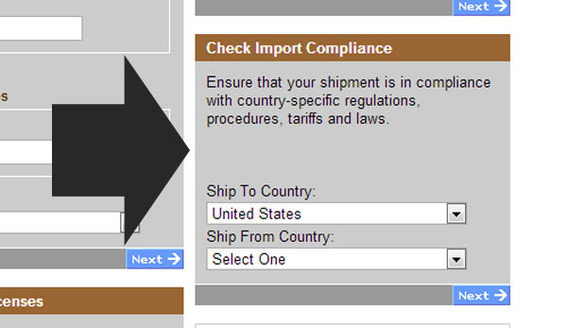Cross-border online sales may account for a significant portion of total ecommerce orders in just the next few years, according to some reports. But for many small online retailers the task of actually shipping a package internationally and understanding all of the associated rules, regulations, and risks can be daunting.
Last year, Dynamic Business, an Australian publication, reported that international shipments might account for 20 percent of that nation’s total ecommerce purchases by 2017. Similarly, the Boston Consulting Group estimated the “Internet Economy” would almost double by 2016, as tens of millions of users begin shopping online from nations like China, Brazil, and Mexico and worldwide more than 3 billion people access the Internet.
Given these sorts of estimates, selling internationally represents a significant opportunity for online retailers. Setting aside international marketing, website localization, or even dealing with any number of currencies, the job of putting a product in a box, placing a proper label on that box, and having it sent out can be an unknown for a small business owner. What follows are five tips to help a small online retailer get started with international shipping.
Choose Products Wisely
Not everything that a retailer sells is a good candidate for international trade. As an example, a multi-channel farm and ranch retailer based in the Northwest recently received a request from Israel. A horse trainer there specializing in western riding and roping wanted to order several large horse feeders. The retailer ships these feeders within the U.S. for about $140.00 each, but sending the plastic and steel corner feeders to Israel would have been more than $1,500.00.
Try to focus on relatively small, light, and easy to ship items.
Understanding Country-specific Regulations, Requirements
Vietnam makes it illegal to import foreign calendars — yes, calendars — for commercial purposes, according to a UPS informational video. This means that online retailers based in the U.S. may not send quantities of more than 100 calendars to customers in Vietnam. Doing so is a crime.
This is just one example of the dozens, if not hundreds, of country-specific regulations that can make international shipping seem complicated. To help, UPS has a handy tool in its international shipping information section that lets shippers retrieve a list of regulations. Simply input the origin and destination countries, and UPS returns information about what’s required.

UPS has a handy tool for finding international shipping regulations.
All of the regulation data is also available from other carriers and the U.S. Department of Commerce. With a good understanding of these rules, international shipping will seem a lot easier.
Target Specific Countries
Given the rules and regulations described above, it can be a good idea to learn, if you will, about international ecommerce by targeting specific countries first. For example, it can be a lot easier for U.S.-based online retailers to ship to Canada or Mexico than to ship to Uganda.
Pick one or two nations and become good at shipping there. Then step-by-step, expand into other nations.
Know What the Shipping Costs
When a U.S.-based retailer ships a t-shirt from Los Angeles to Topeka, there is a single shipping rate. But send that same t-shirt across a border and a whole new set of duties and taxes apply. Understanding the total cost of sending an order internationally is referred to as the “landed cost” and it is important that retailers understand this cost before sending an order.
Imagine what a customer might do if there is suddenly a $20 duty added to an item when it arrives at their door. They might refuse the shipment, and the retailer will have both lost the sale and the cost of freight.
Fortunately, major carriers like FedEx, UPS, and USPS offer tools or even application programming interfaces (APIs) that make it possible to calculate the landed cost and integrate shipping tools into a merchant’s ecommerce platform.
Use Fulfillment Services
Finally, it is possible to take the headache out of shipping internationally, simply hire a fulfillment service like Fulfillment by Amazon, Shipwire, or many others to manage international orders.
In most cases, the retailer will pay a flat fee per order and the fulfillment service will manage packing, labeling, shipping, and monitor all of those pesky rules and regulations.
Many fulfillment services have global warehouses too so that when a merchant’s sales to, say, the United Kingdom justify it, the retailer may actually inventory products in the U.K. at a fulfillment service’s facility and enjoy domestic shipping rates.




